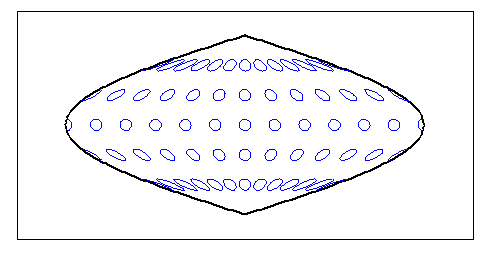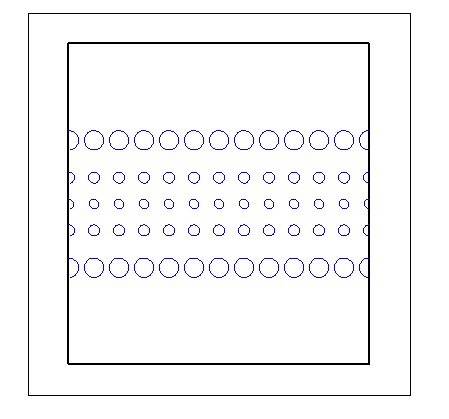tissot
Project Tissot indicatrices on axesm-based map
Syntax
h = tissot
h = tissot(spec)
h = tissot(spec,linetype)
h
= tissot(linestyle)
h = tissot(spec,PropertyName,PropertyValue,...)
h
= tissot(linetype,PropertyName,PropertyValue,...)
Description
h = tissot plots the default Tissot diagram, as
described above, on the current axesm-based map and returns handles for
the displayed indicatrices.
h = tissot(spec) allows
you to specify plotting parameters of the displayed Tissot diagram
as described above.
h = tissot(spec,linetype) and
h
= tissot(linestyle) specifies the line style and
color.
h = tissot(spec,
and
PropertyName,PropertyValue,...) h
= tissot(linetype,
allow the specification of any property and value recognized by the PropertyName,PropertyValue,...)line
function.
Background
Tissot indicatrices are plotting symbols that are useful for understanding the various distortions of a given map projection. The indicatrices are circles of identical true radius on the Earth's surface. When plotted on a map projection, they indicate whether the projection has certain features. If the plotted indicatrices all enclose the same area, the projection is equal area (for example, a Sinusoidal projection would have this feature). If they all remain circular, then conformality is indicated (a Mercator projection has this property). Distortions in meridional or parallel distance are exhibited by flattened or stretched indicatrices. Many projections will show very even, circular indicatrices in some regions, often near the center, and wildly distorted indicatrices in others, such as near the edges. The Tissot diagram is therefore very useful in analyzing the appropriateness of a projection to a given purpose or region.
The general layout of the Tissot diagram is defined by the specification
vector spec.
spec = [Radius] spec = [Latint,Longint] spec = [Latint,Longint,Radius] spec = [Latint,Longint,Radius,Points]
Radius is the small circle radius of each indicatrix circle. If entered, it
should be in the same units as the axesm-based map
Geoid. The default radius is 1/10th the radius of the sphere.
Latint is the latitude interval between indicatrix circle centers. If
entered it should be in the axesm-based map
AngleUnits. The default value is one circle every 30º of latitude (that is,
0º, +/-30º, etc.).
Longint is the longitude interval between indicatrix circle centers. If
entered it should be in the axesm-based map
AngleUnits. The default value is one circle every 30º of latitude (that is,
0º, +/-30º, etc.).
Points is the number of plotting points per
circle. The default is 100 points.
Examples
axesm sinusoid; framem tissot

The Sinusoidal projection is equal area.
setm(gca,'MapProjection','Mercator')

The Mercator projection is conformal.
More About
Version History
Introduced before R2006a